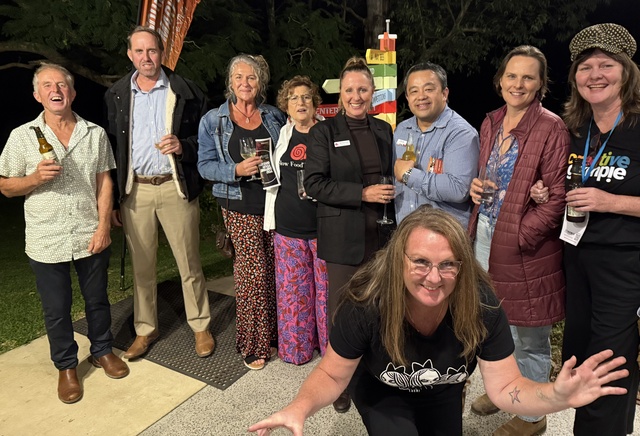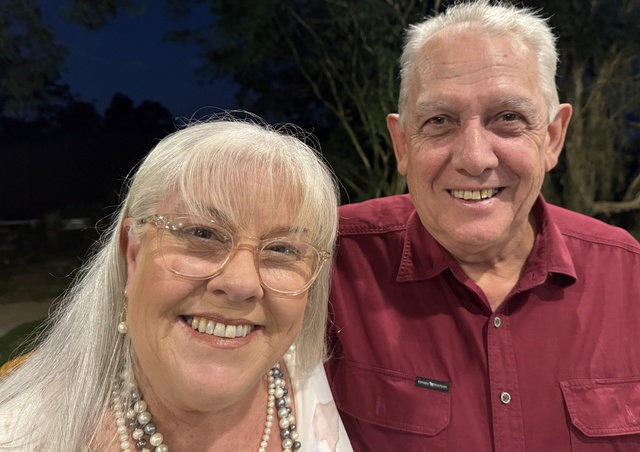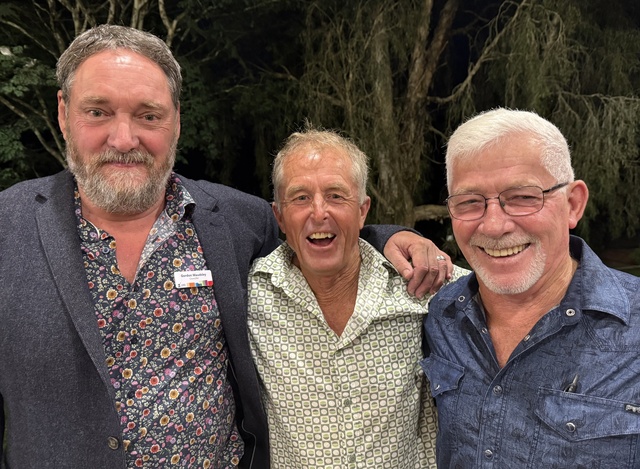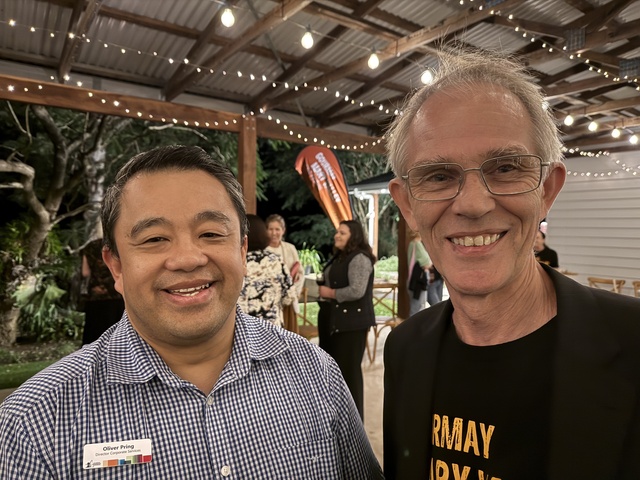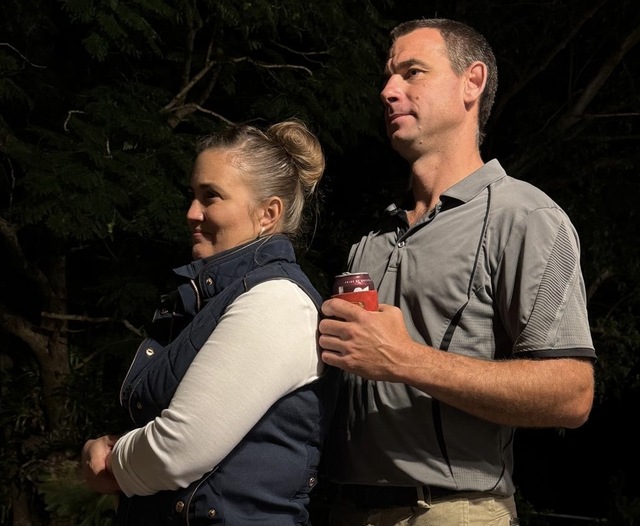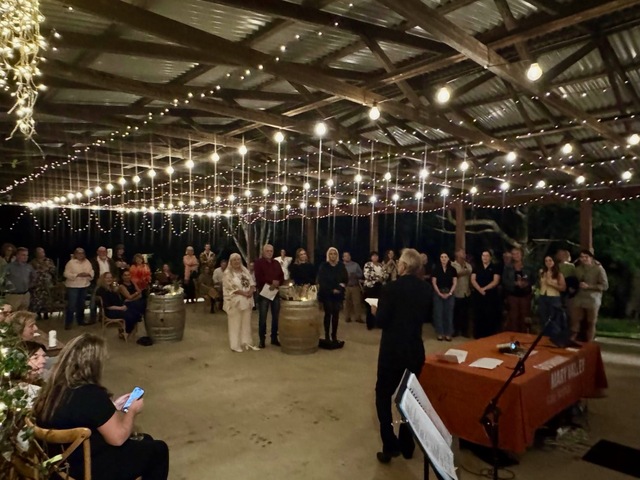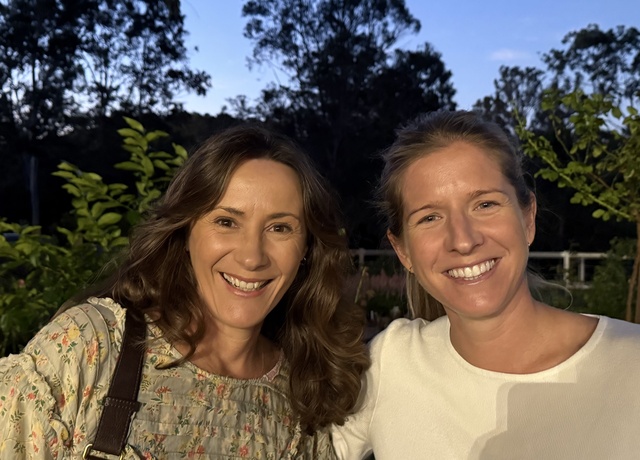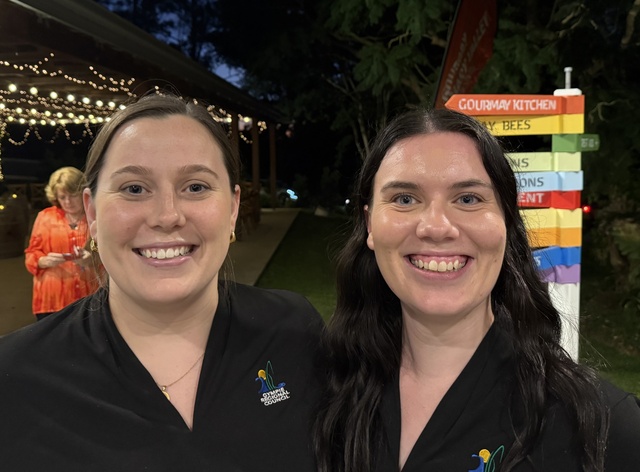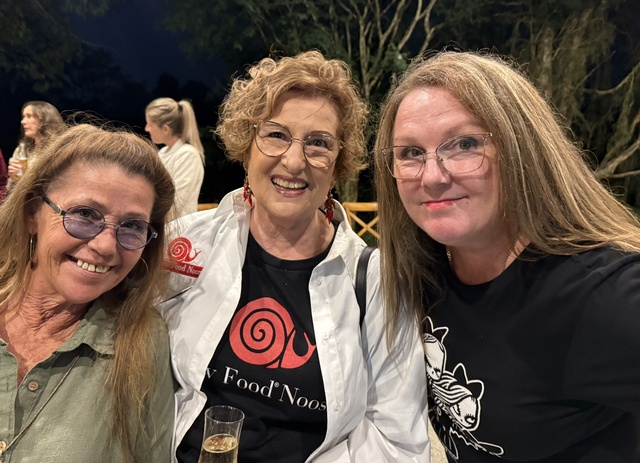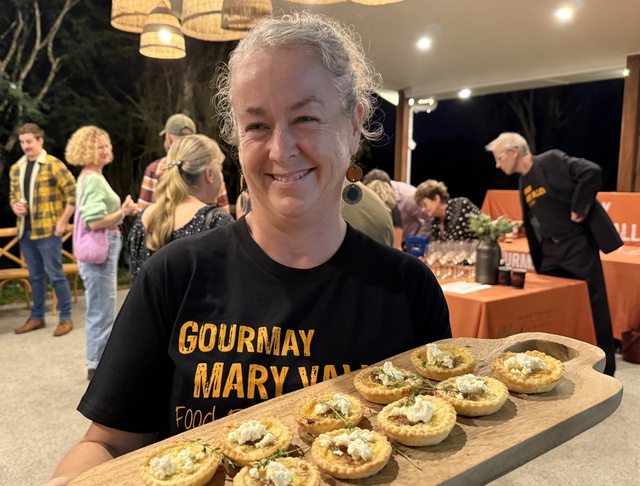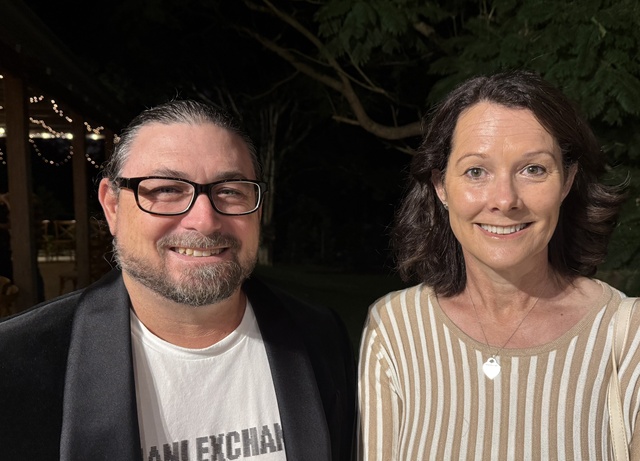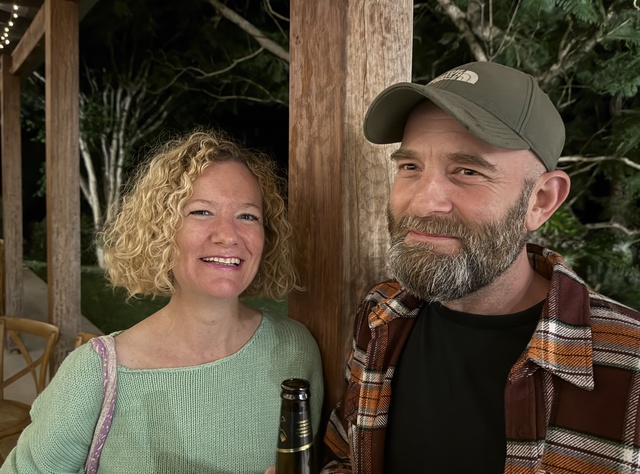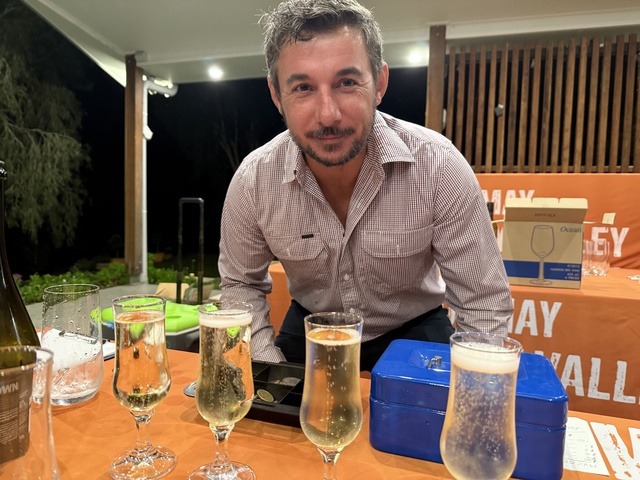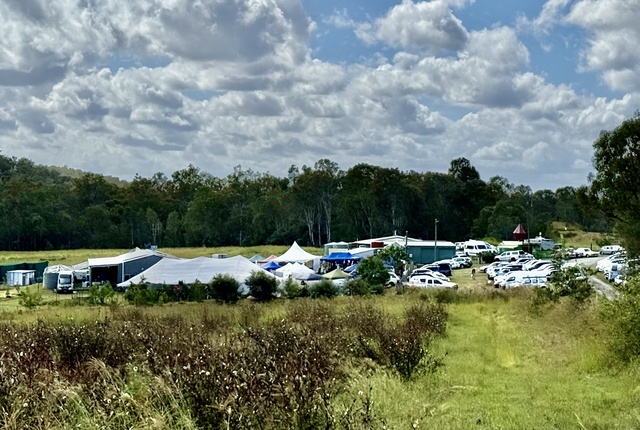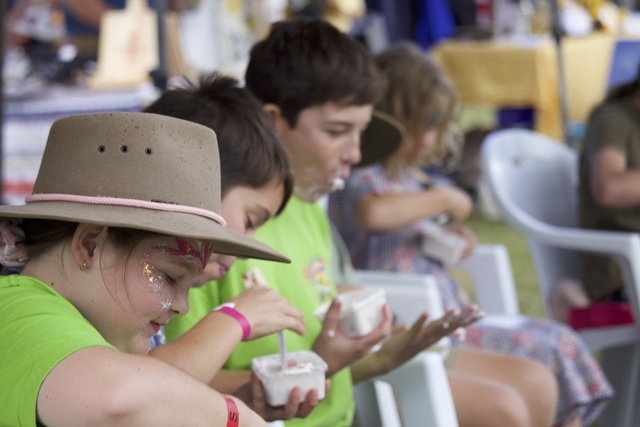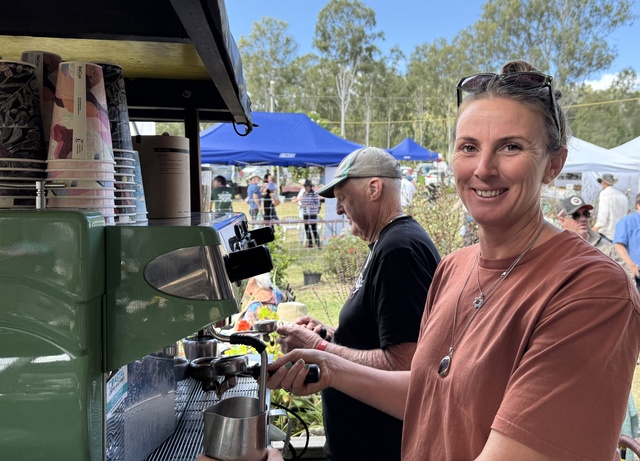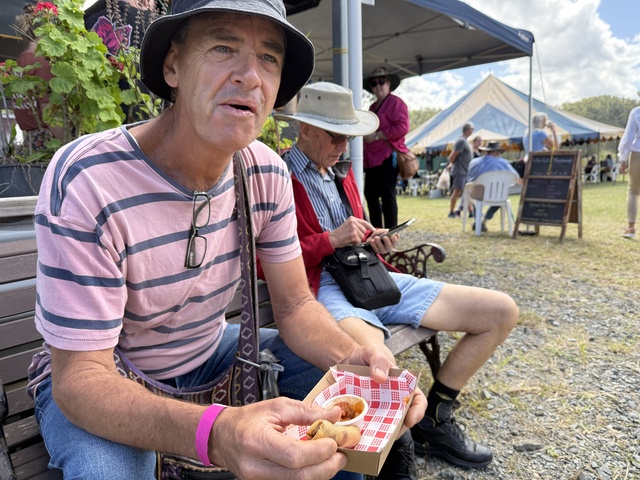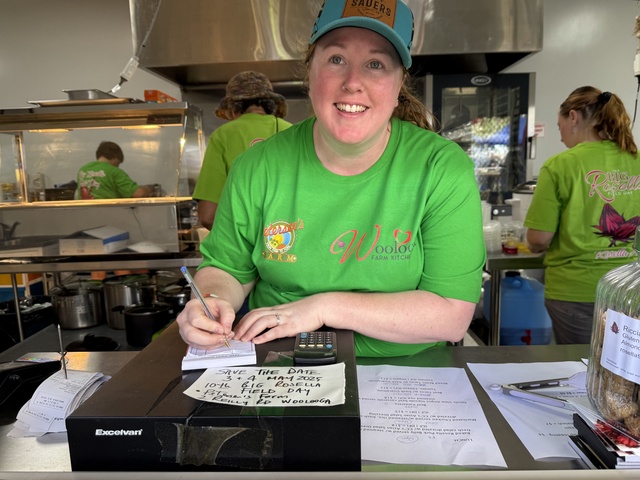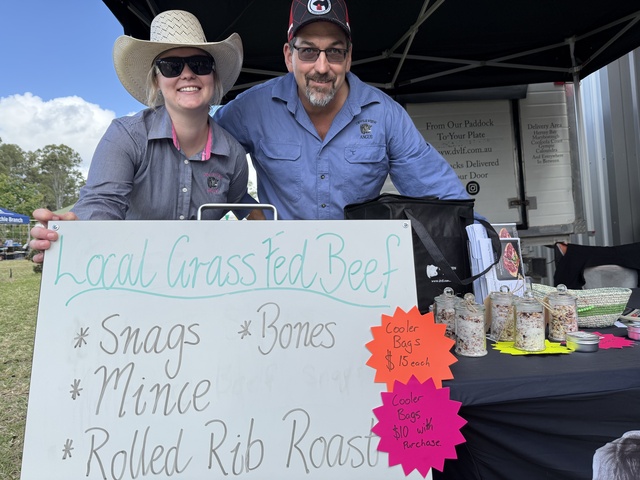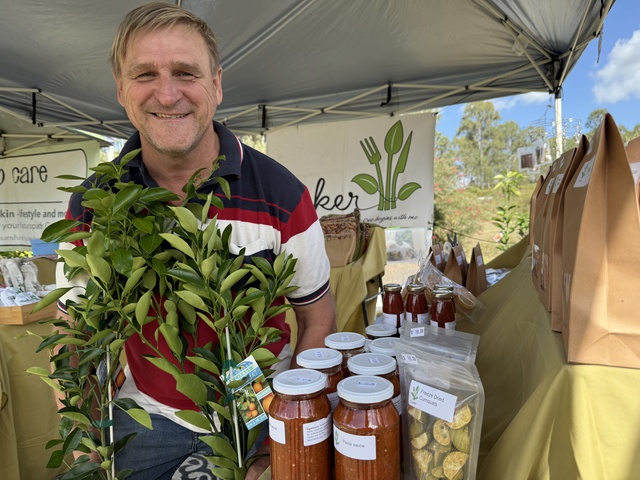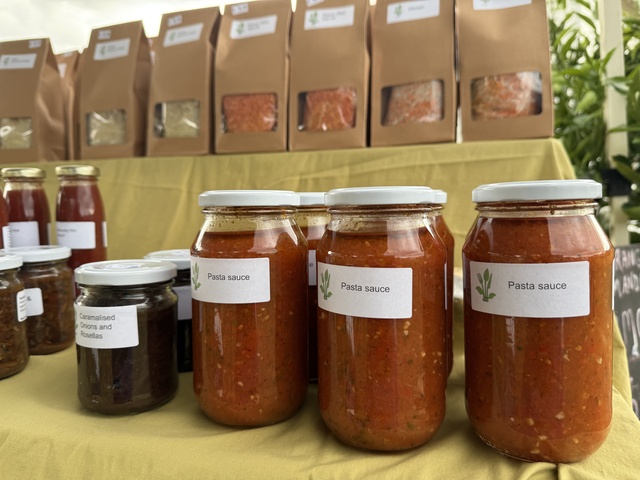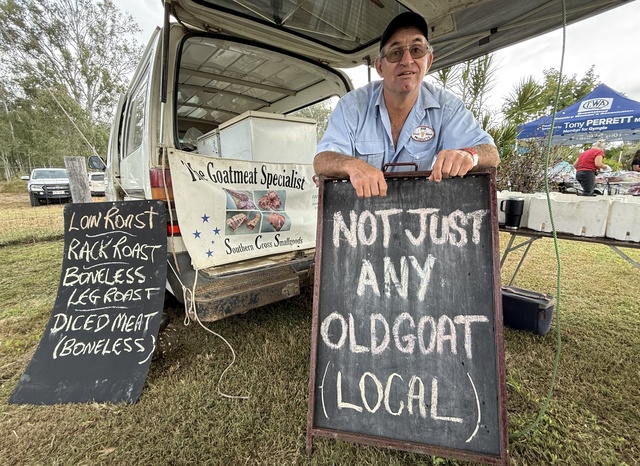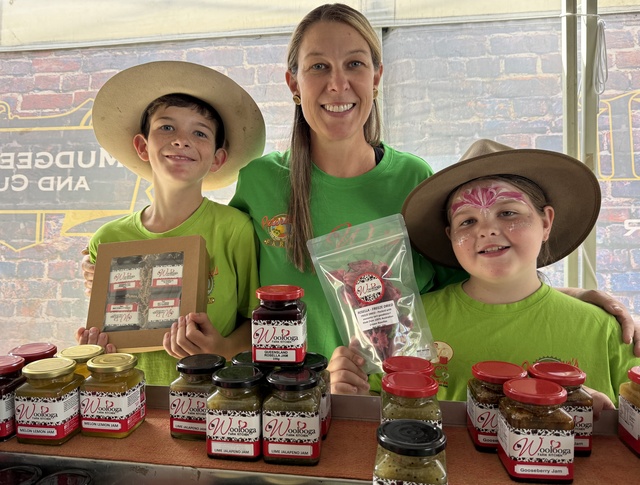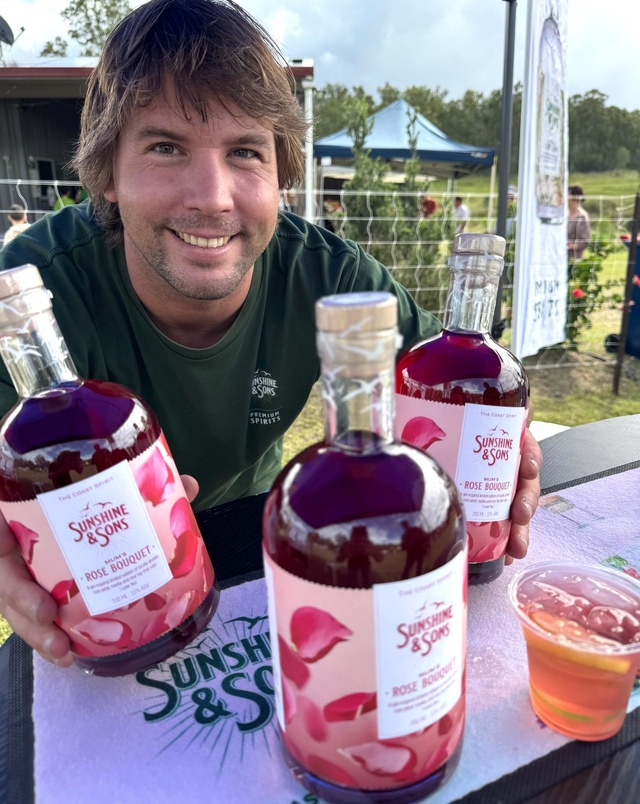Out of the darkness into the light … GourMAY Mary Valley Food Festival 2025 has been welcomed by a wide section of the community
Clear night skies and westerly breezes signalled the start of the festival, now in its third year, as a time to celebrate the quality fresh food there is in the Mary Valley and Gympie.
The weekend also saw Woolooga Farm Kitchen celebrate its 10th Big Rosella Festival – a field day that paid tribute to the endeavour of Cecilia “CC“ Diaz-Petersen and Greg Petersen.
On the preceding Thursday evening, new faces joined with long-time Mary Valley residents for a warm welcome at Kybong for the start of GourMay.
With a clear sky and crescent moon overhead, about 80 guests attended the evening at Woollahra Homestead with hosts Hayley and Duane Deans.
It proved a perfect setting, especially when much of the food was from the farm and prepared on site.
A powerhouse of passionate people had gathered, with Gympie Regional Council deputy mayor Dolly Jensen announcing it was an honour and a privilege to open the month-long celebration of food.
“The Mary Valley is simply breathtaking,’’ she said. “The rolling hills, the fresh air … it’s an absolute feast for the senses.
“Tonight we celebrate more than just exquisite food, we celebrate connection.
“When you think about it, so many of our cherished memories revolve around sharing a meal.
“From family gatherings to first dates, food has this incredible power to bring people together to spark conversations and to create long-lasting bonds.
“And that’s what GourMay is all about, right here in the heart of the Gympie region.
“It’s a celebration to showcase the incredible bounty of this valley, the passion of our local producers and the artistry of our talented chefs.
“Events such as this not only tantalise our taste buds but also shine a light on the unique charm and flavour of our region. It is a way of inviting visitors to come and discover the magic of Mary Valley and all it has to offer.
“Let’s raise a glass to good food, good company and the delicious journey of discovery that awaits us.’’
Cr Gordon Maudsley had the honour of opening GourMay last year and recounted how the area had grown from the ill-conceived Traveston Dam proposal.
“It made me think about growing things from ashes, and that’s how this started.
“When the timber-getters were working in forestry, they would fell the timber and burn it then cast pumpkin seeds to eventually harvest.
“Those early settlers were appreciative of having that food.
“These days, it’s a world of fast food. We pull in, grab something and it’s there to fix the hunger.’’
One of the results of this is food generally being transported many miles.
“A highlight of GourMay is the quality of food,’’ Cr Maudsley said.
“It’s nutrient dense. A lot of our growers utilise chemical-free or spray-free processes to try and deliver a really high-quality food to us made with love, and with low miles.
“It is truly slow food.
“Food is more than something just to survive. It can make us thrive, not just to consume, but to bring us together, to compare, and to share.
“It makes us grow, not just physically but mentally, emotionally and spiritually. It tantalises sensations, flavours, textures and colours.
“GourMay brings that to the fore with almost 30 events over the month.
“The growers, producers, the makers, the bakers, the wine-makers, the brewers, the roasters – the winers and diners, walkers and talkers, foragers and movie buffs.
“The Mary Valley has it all. It’s the place to be.’’
Cr Maudsley said GourMay came about because people who care about food have come together to share the experience.
“Preparation started 11 months ago. I just want to say ’thank you.’
“The variety of produce that comes from so many different areas is what makes GourMay so popular.
“It’s what makes our community.’’
GourMay organiser Malcolm Oakley paid tribute to the number of volunteers, as well as the administrators and the food producers who make it happen.
“There is a fabulous variety of food events … from a women’s angling competition and a shared dinner, to mystery picnics, and macadamia walking tours which are important to the region and the commercial producers.
Other events include matching wine with food, a sunrise breakfast at the top of John Tidy‘s organic avocado property at Amamoor, and a songwriter soup with Amanda Emblem.
Festival day is in the heart of Imbil township on Saturday, 10 May, while the gala celebration at Kandanga Country Club on Saturday, 31 May, round out the celebrations.
Festival day will include bush tucker demonstrations by Peter Wolfe, baking competitions, competitions to guess the weight of a sheep and how many macadamias are in a jar.
This year will see a sculpture competition with children making an art piece out of fruit or vegetables. Then there is the mystery box challenge when locals create something out of a mystery box of ingredients.
“It’s a matter of working together so that this event will continue,’’ Malcolm Oakley said.
“It’s up to all of us to support each other.
“With such support, we can grow this event and make it one of the most authentic food events in Queensland.’’
LAKE TO PLATE
A fascinating new addition to the GourMay program this year is the Lake to Plate at Borumba on Saturday, 17 May.
The Lake Borumba Ladies Anglers Classic will see female anglers spending a day on the water.
The angler to reel in the biggest catch will be crowned the inaugural winner of the Emellia McAuliffe Memorial Cup.
This special award honours Emellia, a passionate angler who loved seeing women embrace the sport she loved.
Then the catch will be passed to celebrity chef Matt Golinski to prepare a shared dinner in the evening.
The day will start with educational sessions from sponsors and local women, offering valuable tips and insights to boost your confidence before participants head out on the water.
Lunch will be included in the competition entry and be provided by the local Lions Club.
Anyone under 18 years of age must be accompanied by a parent or guardian.
More information can be found via the Lake Borumba Fishing Stock Association Facebook Community Page: closer to the event date: www.facebook.com/groups/132015777468338
LOCALS HELPING LOCALS
The first weekend in May is traditionally marked in the diary for The Big Rosella Festival at Woolooga.
This year Cecilia Diaz-Petersen and Greg Petersen welcomed guests to the field days to celebrate 10 years of not just the growth of their business but that of similar producers in the area.
The farm has changed much in that time and so has Greg and CC’s business structure.
What started as a roadside stall selling fresh vegetables and a handful of items from CC’s jam and chutney collection has expanded into a complete working industrial kitchen.
The giant rosella is still there on top of the stall but CC’s Kitchen is now Woolooga Farm Kitchen, where they produce arguably the biggest range of sweet and savoury condiments in Australia.
Not just that, they have a lot of fun in the process and enjoy collaborating with fellow food producers around Woolooga.
“We have struggled over the years,’’ CC said, “and now we are encouraging others .
“It’s all about collaboration and community.’’
On the weekend we caught up with Bradley Pike and daughter Chloe of Devil’s View Angus at Woolooga .
They have a wonderful story to tell about farming in the area, with the Pike family having been here for the best part of 140 years.
Two brothers came in 1888 and farmed 4000 acres but over the years much has been sold off.
Bradley’s father was a traditional beef cattle farmer with a mixed herd.
However, Bradley switched to the angus breed, which is renowned for easy calving, and because of the quality of the meat.
When a fire ripped through the area in 2018 the decision was made to move to regenerative farming methods. This is to retain more moisture in the land, bring in natural nutrients to the soil such as nitrogen from the manure of free-range chickens, and increase the biological health by introducing carbon-rich microbial food.
Planting cover crops helps retain moisture and manage evaporation, as does adding organic material to the soil.
“Our animals never leave the grass,’’ Bradley said.
THE FRUIT THAT KEEPS ON GIVING
The Big Rosella Festival was the first time I had met a grower of calamansi (calamondin cumquat).
Paul Stephenson of Belli Downs at Belli Park had some young fruit trees on show.
The plants look similar to an orange, but the fruit tastes more like a lemon.
It is a hybrid of a kumquat and mandarin.
Often used in beverages, in cooking, as a condiment, and in sauces and also desserts, calamansi is also known as Philippine lime, or Philippine lemon.
“If you are anywhere in Asia and ask for lime juice, this is probably what you get,’’ Paul said.
“They bear fruit all-year round. As soon as you pick them, another flower comes.
“We have 120 trees plus some rosella bushes … there are some cattle on the farm as well.’’
The family farm used to be about 2000 acres but Paul has 750 acres.
ALL ABOUT GOATS
It was somewhat of a surprise to come across Dean Quick of Southern Cross Smallgoods at the Big Rosella Field Day.
Dean breeds goats at his Sexton farm. The salami, sausages and fresh chevon cuts are eagerly sought at markets and are proving particularly popular with those grey nomads on the road and exploring Australia.
There are about 140 acres of Dean’s property where he breeds goats.
Born nearby at Devils Mountain, he has been on the land for 25 years.
He raises caprettos … young goats that have never eaten grass. When the meat is cooked, it turns white.
Yet when the goat gets older, it’s called chevon – an indication that it has eaten pasture and when the meat is cooked turns a nice red color.
Events such as GourMay and the Big Rosella Festival show that the more you are prepared to get out and about, meet, talk and listen to a farmer, the more we learn about all the wonderful produce that is at our back door.
In doing so, not only do we support others in the community but enjoy food that tastes good, is good and has been produced in a fair and equitable manner.
Not only that, we are finding more and more that it is being produced in a sustainable way.


